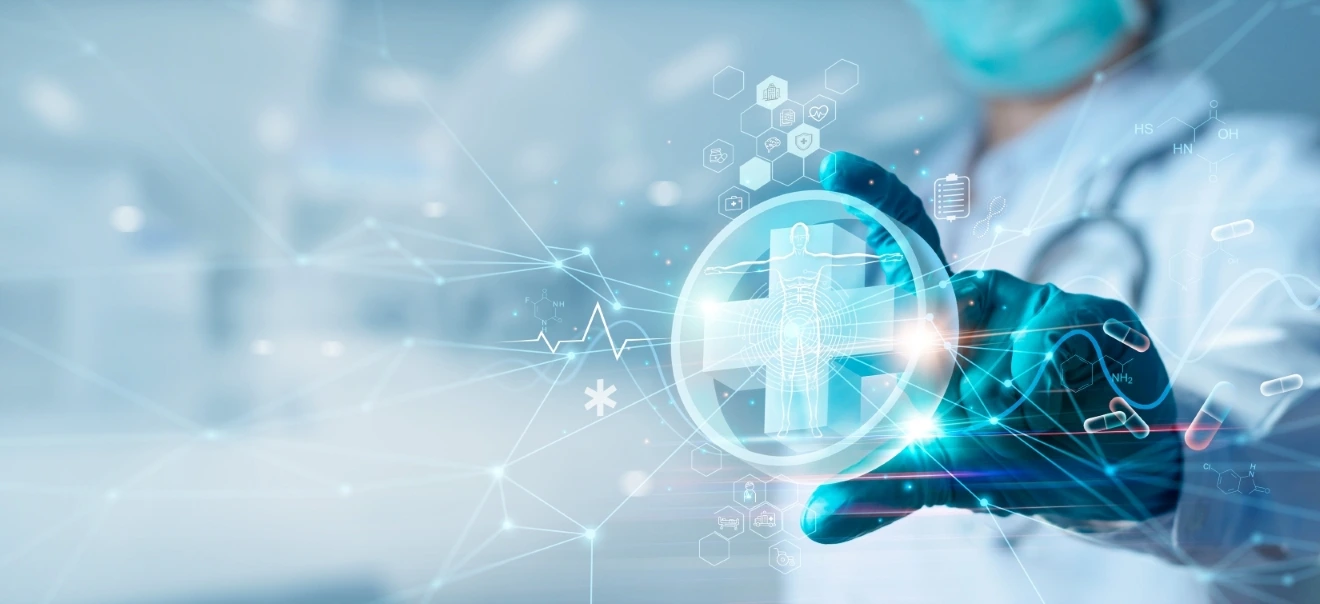Next Generation Antibody Therapeutics Market 2025: Revolutionizing Precision Medicine
The Next Generation Antibody Therapeutics Market is emerging as a critical frontier in the biopharmaceutical industry, promising to redefine treatment paradigms with highly targeted and personalized therapies. Moving beyond traditional monoclonal antibodies, next generation antibody therapeutics introduce advanced molecular engineering to tackle complex diseases like cancer, autoimmune disorders, and infectious diseases with improved efficacy and safety profiles. As we approach 2025, this market is set to experience robust growth driven by scientific innovation, rising disease burden, and evolving healthcare frameworks.
Key Market Drivers
The expansion of the next generation antibody therapeutics market is fueled by several key factors:
- Increasing Prevalence of Chronic Diseases: The global rise in cancer, autoimmune conditions, and infectious diseases is creating an urgent need for more effective and precise therapies that minimize adverse effects.
- Advancements in Antibody Engineering: Innovative formats such as bispecific antibodies, antibody-drug conjugates (ADCs), and antibody fragments offer enhanced targeting capabilities and improved therapeutic outcomes compared to first-generation antibodies.
- Growing Focus on Precision Medicine: Personalized treatment approaches, driven by genetic and molecular profiling, align perfectly with next generation antibody therapeutics, enhancing patient-specific efficacy.
- Favorable Regulatory Environment: Streamlined approval pathways and supportive policies from regulatory bodies are accelerating the introduction of these novel therapies into the market.
- Increased Investment and Collaborations: Significant capital inflow from pharmaceutical companies and venture investors is catalyzing research, development, and commercialization efforts worldwide.
Innovations Driving Market Growth
Innovation is at the heart of the next generation antibody therapeutics market, with several groundbreaking technologies redefining treatment options:
- Bispecific Antibodies: Unlike traditional antibodies that target a single antigen, bispecifics simultaneously bind two distinct targets. This dual action boosts immune cell recruitment to disease sites and enhances therapeutic efficacy, particularly in oncology.
- Antibody-Drug Conjugates (ADCs): ADCs combine the specificity of antibodies with the potency of cytotoxic drugs, delivering toxic agents directly to diseased cells while sparing healthy tissues. This targeted delivery reduces systemic toxicity and improves patient outcomes.
- Nanobodies and Antibody Fragments: Smaller antibody formats offer superior tissue penetration and improved manufacturability, expanding treatment possibilities for hard-to-reach disease sites.
- Enhanced Half-Life and Immune Modulation: Engineered modifications that extend antibody half-life and optimize interactions with the immune system contribute to better treatment adherence and sustained efficacy.
These innovations not only improve therapeutic performance but also address treatment resistance and adverse effects, driving adoption among healthcare providers.
Regional Market Dynamics
The growth of the next generation antibody therapeutics market varies across regions due to differences in healthcare infrastructure, regulatory policies, and market maturity:
- North America: Leading the market with a strong biotechnology ecosystem, substantial R&D investments, and early adoption of cutting-edge therapies. Favorable reimbursement frameworks also support widespread clinical use.
- Europe: Characterized by collaborative research environments and harmonized regulatory standards. European countries actively participate in clinical trials and foster innovation through public-private partnerships.
- Asia-Pacific: Experiencing rapid growth driven by increasing disease prevalence, expanding healthcare infrastructure, and rising government initiatives to promote biotechnology. Nations like China, Japan, and South Korea are investing heavily in local manufacturing and research capabilities.
- Emerging Markets: Regions such as Latin America, the Middle East, and Africa are gradually developing capacity for biopharmaceutical innovation, though challenges around access and cost persist.
Understanding these regional nuances is vital for companies aiming to optimize market entry strategies and capitalize on local opportunities.
Strategic Considerations for Market Players
To successfully navigate the next generation antibody therapeutics market, stakeholders should consider several strategic approaches:
- Invest in R&D and Collaboration: Continuous innovation in antibody engineering is essential. Partnerships with academic institutions, biotech startups, and contract research organizations can accelerate product development.
- Tailor Regional Market Strategies: Adapting to local regulatory landscapes, reimbursement systems, and healthcare practices ensures smoother market penetration and sustainable growth.
- Focus on Manufacturing Excellence: Scalable and cost-effective manufacturing processes for complex biologics are crucial to meet global demand while maintaining quality.
- Patient-Centric Approaches: Enhancing awareness about the benefits and safety of next generation therapies supports better patient acceptance and adherence.
- Balance Pricing and Accessibility: Affordable pricing models, especially in emerging economies, will drive adoption and long-term market expansion.
By aligning innovation with practical market needs, companies can establish competitive advantages and foster patient trust.
Conclusion
The Next Generation Antibody Therapeutics Market is positioned to transform healthcare by offering precise, effective, and safer treatment options. Fueled by technological breakthroughs, rising healthcare demands, and supportive regulatory trends, this market is set for significant growth by 2025.
For pharmaceutical and biotech stakeholders, embracing innovation and regional market insights will be critical in capitalizing on this evolving landscape. Ultimately, next generation antibody therapeutics promise not only to enhance clinical outcomes but also to usher in a new era of personalized medicine, benefiting patients worldwide.
NOTE:
Quants and Trends is proud to offer an extensive portfolio of meticulously researched healthcare market reports, numbering in the thousands. We also provide tailored customization services to ensure our insights align precisely with your strategic objectives and informational needs. For personalized assistance or to discuss your specific requirements, we invite you to get in touch with our team. We also encourage you to request a complimentary sample PDF report. Please visit our Sample Request Page to receive yours today.
Key Market Players
Roche
Amgen
Pfizer
Takeda
Daiichi Sankyo
Seagen
Astellas
Immunomedics
GSK
Immunocore
ADC Therapeutics
Segmentation By Type
Antibody Drug Conjugate (ADC)
Bispecific Antibody (BsAb)
Segmentation By Application
Cancer
Haemophilia
Other Non-Cancer Diseases
Segmentation By Region
North America (United States, Canada, and Mexico)
Europe (Germany, France, UK, Russia, Italy, and Rest of Europe)
Asia-Pacific (China, Japan, South Korea, India, Southeast Asia, Australia and Rest of Asia-Pacific)
South America (Brazil, Argentina and Rest of South America)
Middle East & Africa (Turkey, Saudi Arabia, UAE, Rest of Middle East & Africa)
Market SWOT Analysis
What are the strengths of the Next Generation Antibody Therapeutics Market in 2025?
The next generation antibody therapeutics market is poised for significant growth due to advancements in antibody engineering, enabling more targeted and personalized treatments. Additionally, improved efficacy and reduced side effects are expected to enhance patient outcomes, making these therapies highly attractive in oncology, autoimmune disorders, and infectious diseases.
What are the weaknesses of the Next Generation Antibody Therapeutics Market in 2025?
A key weakness is the high cost associated with the development and production of next-generation antibody therapeutics, which could limit their accessibility. Moreover, the complexity of manufacturing and potential immunogenicity risks may pose challenges for widespread adoption.
What are the opportunities in the Next Generation Antibody Therapeutics Market in 2025?
There are significant opportunities in expanding antibody-based treatments for rare and complex diseases, such as neurodegenerative conditions and genetic disorders. Moreover, collaborations between biotech companies and research institutions will accelerate the discovery of novel antibody candidates, driving market growth.
What are the threats to the Next Generation Antibody Therapeutics Market in 2025?
The market faces threats from emerging competition in the form of alternative therapies, such as gene editing and small molecule drugs. Additionally, regulatory hurdles and the lengthy approval processes for new treatments could delay market entry and affect the commercialization of new therapies.
Market PESTEL Analysis
What are the political factors affecting the Next Generation Antibody Therapeutics Market in 2025?
Government policies regarding healthcare funding, drug approvals, and regulatory pathways will significantly impact the market. Political stability and healthcare reforms, such as those in the U.S. and Europe, could facilitate faster approval processes and increased investments in biotech research.
What are the economic factors affecting the Next Generation Antibody Therapeutics Market in 2025?
Economic conditions, such as healthcare spending and the affordability of cutting-edge treatments, will influence market growth. High treatment costs and reimbursement issues could limit patient access, especially in emerging economies. On the other hand, increasing investments in biotechnology and healthcare infrastructure could provide significant economic opportunities.
What are the social factors affecting the Next Generation Antibody Therapeutics Market in 2025?
Growing patient awareness and demand for personalized medicine are driving the market. Social acceptance of new, advanced treatments and changing attitudes towards biotech solutions will impact adoption rates. However, disparities in healthcare access across different regions may create challenges in achieving widespread usage.
What are the technological factors affecting the Next Generation Antibody Therapeutics Market in 2025?
Advancements in antibody engineering, including bispecific antibodies, antibody-drug conjugates, and monoclonal antibody optimization, will continue to drive innovation in the market. The rise of AI and machine learning in drug discovery and development is expected to accelerate the identification of new therapeutic targets, fostering technological progress.
What are the environmental factors affecting the Next Generation Antibody Therapeutics Market in 2025?
Environmental concerns related to the production processes, such as waste management and sustainability in biotech manufacturing, are becoming increasingly important. The market may face pressure to adopt greener, more sustainable practices to reduce its carbon footprint and meet regulatory standards.
What are the legal factors affecting the Next Generation Antibody Therapeutics Market in 2025?
Intellectual property protection, patent laws, and regulatory approval processes will play a crucial role in shaping the market. Strong patent portfolios are essential for the protection of new antibody therapeutics, while changes in healthcare laws and policies could either ease or complicate market entry and commercialization.
Market SIPOC Analysis
Who are the suppliers in the Next Generation Antibody Therapeutics Market 2025?
Suppliers include biotech and pharmaceutical companies, research institutions, contract research organizations (CROs), and raw material providers for the production of antibodies, including cell lines and reagents. These entities are key in providing the resources required for the development and manufacturing of next-generation antibody therapeutics.
What are the inputs in the Next Generation Antibody Therapeutics Market 2025?
The inputs consist of advanced biotechnology research, monoclonal antibodies, genetic data, state-of-the-art lab equipment, and skilled researchers. Furthermore, regulatory frameworks and financial investments in R&D play a crucial role in the progression of these therapies.
What is the process in the Next Generation Antibody Therapeutics Market 2025?
The process involves identifying therapeutic targets, designing and engineering next-generation antibodies, conducting preclinical trials, and navigating regulatory approval pathways. It also includes manufacturing, scaling up production, and ensuring the quality control of these biologics.
Who are the customers in the Next Generation Antibody Therapeutics Market 2025?
Customers primarily include healthcare providers such as hospitals, clinics, and specialty treatment centers, as well as patients requiring cutting-edge therapies for cancer, autoimmune diseases, and other complex conditions. Pharmaceutical distributors and insurers also play a role in the market's customer landscape.
What are the outputs in the Next Generation Antibody Therapeutics Market 2025?
The outputs are next-generation antibody therapeutics that target diseases with high unmet medical needs. These therapeutics include monoclonal antibodies, bispecific antibodies, and antibody-drug conjugates, designed to offer improved efficacy, precision, and safety for patients.
Market Porter's Five Forces
What is the threat of new entrants in the Next Generation Antibody Therapeutics Market 2025?
The threat of new entrants is relatively moderate. While the market holds significant potential, high R&D costs, complex regulatory approval processes, and the need for advanced technological expertise act as barriers to entry. Established pharmaceutical and biotech companies dominate, making it challenging for new players to enter without substantial resources.
What is the bargaining power of suppliers in the Next Generation Antibody Therapeutics Market 2025?
The bargaining power of suppliers is moderate to high. Suppliers of raw materials, specialized reagents, and biotechnological equipment are essential to the production process, and their influence can be significant, especially given the complexity of antibody development. However, the increasing number of suppliers in the biotech sector is creating some balance.
What is the bargaining power of buyers in the Next Generation Antibody Therapeutics Market 2025?
The bargaining power of buyers, especially large healthcare providers and pharmaceutical distributors, is moderate. As the number of antibody therapeutics grows, there is more choice for treatment options, but these therapies remain highly specialized, so buyers are limited in their negotiating leverage, particularly with innovative, cutting-edge treatments.
What is the threat of substitute products in the Next Generation Antibody Therapeutics Market 2025?
The threat of substitutes is moderate. While alternatives like gene therapy, small molecule drugs, and other biologics exist, next-generation antibody therapeutics provide unique advantages, particularly in targeting specific diseases with precision. However, as other treatments, such as immunotherapies and cell therapies, advance, they may pose competition.
What is the intensity of competitive rivalry in the Next Generation Antibody Therapeutics Market 2025?
The intensity of competitive rivalry is high. Numerous large pharmaceutical companies and biotech firms are aggressively investing in next-generation antibody therapies, leading to significant competition. Companies are focused on developing innovative treatments, improving efficacy, and reducing side effects, which fuels rivalry in this rapidly evolving market.
Market Upstream Analysis
What are the key raw materials required in the Next Generation Antibody Therapeutics Market 2025?
The key raw materials include high-quality cell lines, biologically active proteins, growth factors, reagents for antibody production, and specialized culture media. These are essential for the creation and optimization of monoclonal and bispecific antibodies.
What are the main suppliers in the Next Generation Antibody Therapeutics Market 2025?
Main suppliers include biotechnology companies, contract manufacturing organizations (CMOs), suppliers of biologic reagents, and specialized equipment manufacturers. These entities provide the necessary tools, materials, and infrastructure for research and production of next-generation antibody therapeutics.
What are the technological requirements in the Next Generation Antibody Therapeutics Market 2025?
The market requires advanced biotechnological platforms such as recombinant DNA technology, protein engineering, and monoclonal antibody development. Cutting-edge tools like CRISPR and AI-based drug discovery are also pivotal in enhancing antibody design, optimization, and production.
What are the regulatory challenges in the Next Generation Antibody Therapeutics Market 2025?
Regulatory challenges include navigating complex approval processes for biologics, ensuring the safety and efficacy of new antibody therapies, and meeting stringent quality control standards. These challenges can delay product development and increase costs, impacting the supply chain for upstream materials.
What is the impact of research and development on the upstream market for Next Generation Antibody Therapeutics?
R&D plays a critical role in upstream activities by driving innovation in antibody design and production techniques. The development of new, more efficient manufacturing processes and the discovery of novel therapeutic targets significantly influence the sourcing of raw materials, shaping supply chain dynamics.
Market Midstream Analysis
What are the key processes involved in the midstream of the Next Generation Antibody Therapeutics Market 2025?
The midstream processes include the development and manufacturing of the next-generation antibody therapeutics, including cell line optimization, large-scale production, purification, and formulation. This stage also involves scaling up production to meet market demand while maintaining high standards of quality control.
What are the main players in the midstream of the Next Generation Antibody Therapeutics Market 2025?
Main players in the midstream include contract manufacturing organizations (CMOs), specialized biotech firms, and facilities responsible for large-scale production and distribution. These entities are responsible for transforming lab-scale antibody candidates into commercial-ready therapies.
What are the technological requirements in the midstream of the Next Generation Antibody Therapeutics Market 2025?
Technological requirements include advanced bioreactor systems, purification techniques like protein A chromatography, and automation for high-throughput screening and production. Innovations in continuous manufacturing and automation are enhancing efficiency and reducing costs in this stage.
What are the quality control and regulatory aspects in the midstream of the Next Generation Antibody Therapeutics Market 2025?
Quality control is critical in ensuring that the produced antibodies meet rigorous safety, efficacy, and purity standards. Regulatory compliance, including adherence to Good Manufacturing Practices (GMP) and regular inspections by regulatory bodies like the FDA and EMA, ensures the safety and reliability of the therapeutic products.
What are the distribution and logistics challenges in the midstream of the Next Generation Antibody Therapeutics Market 2025?
Distribution and logistics challenges include ensuring the stable transport of temperature-sensitive biologics and managing supply chain complexities. Coordinating with healthcare providers, pharmacies, and distributors to maintain timely availability while ensuring proper storage conditions is critical for market success.
Market Downstream Analysis
What are the key activities involved in the downstream of the Next Generation Antibody Therapeutics Market 2025?
The downstream activities include the distribution, marketing, and commercialization of next-generation antibody therapeutics. This stage also involves post-market surveillance, patient support programs, and ensuring the availability of the therapy to healthcare providers and patients through effective distribution networks.
What are the main players in the downstream of the Next Generation Antibody Therapeutics Market 2025?
Main players in the downstream include pharmaceutical companies, healthcare providers, hospitals, specialty pharmacies, and distributors. These entities manage the delivery, sale, and post-market management of antibody therapies, ensuring they reach the right patients at the right time.
What are the challenges in the downstream of the Next Generation Antibody Therapeutics Market 2025?
Challenges include managing the high costs of therapy, which may limit access for some patients, and ensuring reimbursement from insurance companies. Additionally, the logistics of cold chain management for biologics and maintaining supply consistency across global markets remain complex issues.
What role does marketing play in the downstream of the Next Generation Antibody Therapeutics Market 2025?
Marketing plays a critical role in educating healthcare providers and patients about the benefits and potential of next-generation antibody therapeutics. Effective marketing strategies involve building awareness, addressing unmet medical needs, and promoting the unique value proposition of these therapies to different stakeholders.
What is the impact of regulatory approval and pricing on the downstream of the Next Generation Antibody Therapeutics Market 2025?
Regulatory approval and pricing directly impact market access and product availability. Once approved, pricing strategies must balance cost-effectiveness for healthcare systems while ensuring profitability for manufacturers. In addition, regulatory policies regarding reimbursement and pricing can either facilitate or hinder the widespread adoption of these therapies.
Chapter 1, to describe Next Generation Antibody Therapeutics product scope, market overview, market estimation caveats and base year.
Chapter 2, to profile the top players of Next Generation Antibody Therapeutics, with revenue, gross margin and global market share of Next Generation Antibody Therapeutics from 2018 to 2023.
Chapter 3, the Next Generation Antibody Therapeutics competitive situation, revenue and global market share of top players are analyzed emphatically by landscape contrast.
Chapter 4 and 5, to segment the market size by Type and application, with consumption value and growth rate by Type, application, from 2018 to 2029.
Chapter 6, 7, 8, 9, and 10, to break the market size data at the country level, with revenue and market share for key countries in the world, from 2018 to 2023.and Next Generation Antibody Therapeutics market forecast, by regions, type and application, with consumption value, from 2024 to 2029.
Chapter 11, market dynamics, drivers, restraints, trends, Porters Five Forces analysis, and Influence of COVID-19 and Russia-Ukraine War
Chapter 12, the key raw materials and key suppliers, and industry chain of Next Generation Antibody Therapeutics.
Chapter 13, to describe Next Generation Antibody Therapeutics research findings and conclusion.
1 Market Overview
1.1 Product Overview and Scope of Next Generation Antibody Therapeutics
1.2 Market Estimation Caveats and Base Year
1.3 Classification of Next Generation Antibody Therapeutics by Type
1.3.1 Overview: Global Next Generation Antibody Therapeutics Market Size by Type: 2018 Versus 2022 Versus 2029
1.3.2 Global Next Generation Antibody Therapeutics Consumption Value Market Share by Type in 2022
1.3.3 Antibody Drug Conjugate (ADC)
1.3.4 Bispecific Antibody (BsAb)
1.4 Global Next Generation Antibody Therapeutics Market by Application
1.4.1 Overview: Global Next Generation Antibody Therapeutics Market Size by Application: 2018 Versus 2022 Versus 2029
1.4.2 Cancer
1.4.3 Haemophilia
1.4.4 Other Non-Cancer Diseases
1.5 Global Next Generation Antibody Therapeutics Market Size & Forecast
1.6 Global Next Generation Antibody Therapeutics Market Size and Forecast by Region
1.6.1 Global Next Generation Antibody Therapeutics Market Size by Region: 2018 VS 2022 VS 2029
1.6.2 Global Next Generation Antibody Therapeutics Market Size by Region, (2018-2029)
1.6.3 North America Next Generation Antibody Therapeutics Market Size and Prospect (2018-2029)
1.6.4 Europe Next Generation Antibody Therapeutics Market Size and Prospect (2018-2029)
1.6.5 Asia-Pacific Next Generation Antibody Therapeutics Market Size and Prospect (2018-2029)
1.6.6 South America Next Generation Antibody Therapeutics Market Size and Prospect (2018-2029)
1.6.7 Middle East and Africa Next Generation Antibody Therapeutics Market Size and Prospect (2018-2029)
2 Company Profiles
2.1 Roche
2.1.1 Roche Details
2.1.2 Roche Major Business
2.1.3 Roche Next Generation Antibody Therapeutics Product and Solutions
2.1.4 Roche Next Generation Antibody Therapeutics Revenue, Gross Margin and Market Share (2018-2023)
2.1.5 Roche Recent Developments and Future Plans
2.2 Amgen
2.2.1 Amgen Details
2.2.2 Amgen Major Business
2.2.3 Amgen Next Generation Antibody Therapeutics Product and Solutions
2.2.4 Amgen Next Generation Antibody Therapeutics Revenue, Gross Margin and Market Share (2018-2023)
2.2.5 Amgen Recent Developments and Future Plans
2.3 Pfizer
2.3.1 Pfizer Details
2.3.2 Pfizer Major Business
2.3.3 Pfizer Next Generation Antibody Therapeutics Product and Solutions
2.3.4 Pfizer Next Generation Antibody Therapeutics Revenue, Gross Margin and Market Share (2018-2023)
2.3.5 Pfizer Recent Developments and Future Plans
2.4 Takeda
2.4.1 Takeda Details
2.4.2 Takeda Major Business
2.4.3 Takeda Next Generation Antibody Therapeutics Product and Solutions
2.4.4 Takeda Next Generation Antibody Therapeutics Revenue, Gross Margin and Market Share (2018-2023)
2.4.5 Takeda Recent Developments and Future Plans
2.5 Daiichi Sankyo
2.5.1 Daiichi Sankyo Details
2.5.2 Daiichi Sankyo Major Business
2.5.3 Daiichi Sankyo Next Generation Antibody Therapeutics Product and Solutions
2.5.4 Daiichi Sankyo Next Generation Antibody Therapeutics Revenue, Gross Margin and Market Share (2018-2023)
2.5.5 Daiichi Sankyo Recent Developments and Future Plans
2.6 Seagen
2.6.1 Seagen Details
2.6.2 Seagen Major Business
2.6.3 Seagen Next Generation Antibody Therapeutics Product and Solutions
2.6.4 Seagen Next Generation Antibody Therapeutics Revenue, Gross Margin and Market Share (2018-2023)
2.6.5 Seagen Recent Developments and Future Plans
2.7 Astellas
2.7.1 Astellas Details
2.7.2 Astellas Major Business
2.7.3 Astellas Next Generation Antibody Therapeutics Product and Solutions
2.7.4 Astellas Next Generation Antibody Therapeutics Revenue, Gross Margin and Market Share (2018-2023)
2.7.5 Astellas Recent Developments and Future Plans
2.8 Immunomedics
2.8.1 Immunomedics Details
2.8.2 Immunomedics Major Business
2.8.3 Immunomedics Next Generation Antibody Therapeutics Product and Solutions
2.8.4 Immunomedics Next Generation Antibody Therapeutics Revenue, Gross Margin and Market Share (2018-2023)
2.8.5 Immunomedics Recent Developments and Future Plans
2.9 GSK
2.9.1 GSK Details
2.9.2 GSK Major Business
2.9.3 GSK Next Generation Antibody Therapeutics Product and Solutions
2.9.4 GSK Next Generation Antibody Therapeutics Revenue, Gross Margin and Market Share (2018-2023)
2.9.5 GSK Recent Developments and Future Plans
2.10 Immunocore
2.10.1 Immunocore Details
2.10.2 Immunocore Major Business
2.10.3 Immunocore Next Generation Antibody Therapeutics Product and Solutions
2.10.4 Immunocore Next Generation Antibody Therapeutics Revenue, Gross Margin and Market Share (2018-2023)
2.10.5 Immunocore Recent Developments and Future Plans
2.11 ADC Therapeutics
2.11.1 ADC Therapeutics Details
2.11.2 ADC Therapeutics Major Business
2.11.3 ADC Therapeutics Next Generation Antibody Therapeutics Product and Solutions
2.11.4 ADC Therapeutics Next Generation Antibody Therapeutics Revenue, Gross Margin and Market Share (2018-2023)
2.11.5 ADC Therapeutics Recent Developments and Future Plans
3 Market Competition, by Players
3.1 Global Next Generation Antibody Therapeutics Revenue and Share by Players (2018-2023)
3.2 Market Share Analysis (2022)
3.2.1 Market Share of Next Generation Antibody Therapeutics by Company Revenue
3.2.2 Top 3 Next Generation Antibody Therapeutics Players Market Share in 2022
3.2.3 Top 6 Next Generation Antibody Therapeutics Players Market Share in 2022
3.3 Next Generation Antibody Therapeutics Market: Overall Company Footprint Analysis
3.3.1 Next Generation Antibody Therapeutics Market: Region Footprint
3.3.2 Next Generation Antibody Therapeutics Market: Company Product Type Footprint
3.3.3 Next Generation Antibody Therapeutics Market: Company Product Application Footprint
3.4 New Market Entrants and Barriers to Market Entry
3.5 Mergers, Acquisition, Agreements, and Collaborations
4 Market Size Segment by Type
4.1 Global Next Generation Antibody Therapeutics Consumption Value and Market Share by Type (2018-2023)
4.2 Global Next Generation Antibody Therapeutics Market Forecast by Type (2024-2029)
5 Market Size Segment by Application
5.1 Global Next Generation Antibody Therapeutics Consumption Value Market Share by Application (2018-2023)
5.2 Global Next Generation Antibody Therapeutics Market Forecast by Application (2024-2029)
6 North America
6.1 North America Next Generation Antibody Therapeutics Consumption Value by Type (2018-2029)
6.2 North America Next Generation Antibody Therapeutics Consumption Value by Application (2018-2029)
6.3 North America Next Generation Antibody Therapeutics Market Size by Country
6.3.1 North America Next Generation Antibody Therapeutics Consumption Value by Country (2018-2029)
6.3.2 United States Next Generation Antibody Therapeutics Market Size and Forecast (2018-2029)
6.3.3 Canada Next Generation Antibody Therapeutics Market Size and Forecast (2018-2029)
6.3.4 Mexico Next Generation Antibody Therapeutics Market Size and Forecast (2018-2029)
7 Europe
7.1 Europe Next Generation Antibody Therapeutics Consumption Value by Type (2018-2029)
7.2 Europe Next Generation Antibody Therapeutics Consumption Value by Application (2018-2029)
7.3 Europe Next Generation Antibody Therapeutics Market Size by Country
7.3.1 Europe Next Generation Antibody Therapeutics Consumption Value by Country (2018-2029)
7.3.2 Germany Next Generation Antibody Therapeutics Market Size and Forecast (2018-2029)
7.3.3 France Next Generation Antibody Therapeutics Market Size and Forecast (2018-2029)
7.3.4 United Kingdom Next Generation Antibody Therapeutics Market Size and Forecast (2018-2029)
7.3.5 Russia Next Generation Antibody Therapeutics Market Size and Forecast (2018-2029)
7.3.6 Italy Next Generation Antibody Therapeutics Market Size and Forecast (2018-2029)
8 Asia-Pacific
8.1 Asia-Pacific Next Generation Antibody Therapeutics Consumption Value by Type (2018-2029)
8.2 Asia-Pacific Next Generation Antibody Therapeutics Consumption Value by Application (2018-2029)
8.3 Asia-Pacific Next Generation Antibody Therapeutics Market Size by Region
8.3.1 Asia-Pacific Next Generation Antibody Therapeutics Consumption Value by Region (2018-2029)
8.3.2 China Next Generation Antibody Therapeutics Market Size and Forecast (2018-2029)
8.3.3 Japan Next Generation Antibody Therapeutics Market Size and Forecast (2018-2029)
8.3.4 South Korea Next Generation Antibody Therapeutics Market Size and Forecast (2018-2029)
8.3.5 India Next Generation Antibody Therapeutics Market Size and Forecast (2018-2029)
8.3.6 Southeast Asia Next Generation Antibody Therapeutics Market Size and Forecast (2018-2029)
8.3.7 Australia Next Generation Antibody Therapeutics Market Size and Forecast (2018-2029)
9 South America
9.1 South America Next Generation Antibody Therapeutics Consumption Value by Type (2018-2029)
9.2 South America Next Generation Antibody Therapeutics Consumption Value by Application (2018-2029)
9.3 South America Next Generation Antibody Therapeutics Market Size by Country
9.3.1 South America Next Generation Antibody Therapeutics Consumption Value by Country (2018-2029)
9.3.2 Brazil Next Generation Antibody Therapeutics Market Size and Forecast (2018-2029)
9.3.3 Argentina Next Generation Antibody Therapeutics Market Size and Forecast (2018-2029)
10 Middle East & Africa
10.1 Middle East & Africa Next Generation Antibody Therapeutics Consumption Value by Type (2018-2029)
10.2 Middle East & Africa Next Generation Antibody Therapeutics Consumption Value by Application (2018-2029)
10.3 Middle East & Africa Next Generation Antibody Therapeutics Market Size by Country
10.3.1 Middle East & Africa Next Generation Antibody Therapeutics Consumption Value by Country (2018-2029)
10.3.2 Turkey Next Generation Antibody Therapeutics Market Size and Forecast (2018-2029)
10.3.3 Saudi Arabia Next Generation Antibody Therapeutics Market Size and Forecast (2018-2029)
10.3.4 UAE Next Generation Antibody Therapeutics Market Size and Forecast (2018-2029)
11 Market Dynamics
11.1 Next Generation Antibody Therapeutics Market Drivers
11.2 Next Generation Antibody Therapeutics Market Restraints
11.3 Next Generation Antibody Therapeutics Trends Analysis
11.4 Porters Five Forces Analysis
11.4.1 Threat of New Entrants
11.4.2 Bargaining Power of Suppliers
11.4.3 Bargaining Power of Buyers
11.4.4 Threat of Substitutes
11.4.5 Competitive Rivalry
11.5 Influence of COVID-19 and Russia-Ukraine War
11.5.1 Influence of COVID-19
11.5.2 Influence of Russia-Ukraine War
12 Industry Chain Analysis
12.1 Next Generation Antibody Therapeutics Industry Chain
12.2 Next Generation Antibody Therapeutics Upstream Analysis
12.3 Next Generation Antibody Therapeutics Midstream Analysis
12.4 Next Generation Antibody Therapeutics Downstream Analysis
13 Research Findings and Conclusion
14 Appendix
14.1 Methodology
14.2 Research Process and Data Source
14.3 Disclaimer
List of Tables
Table 1. Global Next Generation Antibody Therapeutics Consumption Value by Type, (USD Million), 2018 & 2022 & 2029
Table 2. Global Next Generation Antibody Therapeutics Consumption Value by Application, (USD Million), 2018 & 2022 & 2029
Table 3. Global Next Generation Antibody Therapeutics Consumption Value by Region (2018-2023) & (USD Million)
Table 4. Global Next Generation Antibody Therapeutics Consumption Value by Region (2024-2029) & (USD Million)
Table 5. Roche Company Information, Head Office, and Major Competitors
Table 6. Roche Major Business
Table 7. Roche Next Generation Antibody Therapeutics Product and Solutions
Table 8. Roche Next Generation Antibody Therapeutics Revenue (USD Million), Gross Margin and Market Share (2018-2023)
Table 9. Roche Recent Developments and Future Plans
Table 10. Amgen Company Information, Head Office, and Major Competitors
Table 11. Amgen Major Business
Table 12. Amgen Next Generation Antibody Therapeutics Product and Solutions
Table 13. Amgen Next Generation Antibody Therapeutics Revenue (USD Million), Gross Margin and Market Share (2018-2023)
Table 14. Amgen Recent Developments and Future Plans
Table 15. Pfizer Company Information, Head Office, and Major Competitors
Table 16. Pfizer Major Business
Table 17. Pfizer Next Generation Antibody Therapeutics Product and Solutions
Table 18. Pfizer Next Generation Antibody Therapeutics Revenue (USD Million), Gross Margin and Market Share (2018-2023)
Table 19. Pfizer Recent Developments and Future Plans
Table 20. Takeda Company Information, Head Office, and Major Competitors
Table 21. Takeda Major Business
Table 22. Takeda Next Generation Antibody Therapeutics Product and Solutions
Table 23. Takeda Next Generation Antibody Therapeutics Revenue (USD Million), Gross Margin and Market Share (2018-2023)
Table 24. Takeda Recent Developments and Future Plans
Table 25. Daiichi Sankyo Company Information, Head Office, and Major Competitors
Table 26. Daiichi Sankyo Major Business
Table 27. Daiichi Sankyo Next Generation Antibody Therapeutics Product and Solutions
Table 28. Daiichi Sankyo Next Generation Antibody Therapeutics Revenue (USD Million), Gross Margin and Market Share (2018-2023)
Table 29. Daiichi Sankyo Recent Developments and Future Plans
Table 30. Seagen Company Information, Head Office, and Major Competitors
Table 31. Seagen Major Business
Table 32. Seagen Next Generation Antibody Therapeutics Product and Solutions
Table 33. Seagen Next Generation Antibody Therapeutics Revenue (USD Million), Gross Margin and Market Share (2018-2023)
Table 34. Seagen Recent Developments and Future Plans
Table 35. Astellas Company Information, Head Office, and Major Competitors
Table 36. Astellas Major Business
Table 37. Astellas Next Generation Antibody Therapeutics Product and Solutions
Table 38. Astellas Next Generation Antibody Therapeutics Revenue (USD Million), Gross Margin and Market Share (2018-2023)
Table 39. Astellas Recent Developments and Future Plans
Table 40. Immunomedics Company Information, Head Office, and Major Competitors
Table 41. Immunomedics Major Business
Table 42. Immunomedics Next Generation Antibody Therapeutics Product and Solutions
Table 43. Immunomedics Next Generation Antibody Therapeutics Revenue (USD Million), Gross Margin and Market Share (2018-2023)
Table 44. Immunomedics Recent Developments and Future Plans
Table 45. GSK Company Information, Head Office, and Major Competitors
Table 46. GSK Major Business
Table 47. GSK Next Generation Antibody Therapeutics Product and Solutions
Table 48. GSK Next Generation Antibody Therapeutics Revenue (USD Million), Gross Margin and Market Share (2018-2023)
Table 49. GSK Recent Developments and Future Plans
Table 50. Immunocore Company Information, Head Office, and Major Competitors
Table 51. Immunocore Major Business
Table 52. Immunocore Next Generation Antibody Therapeutics Product and Solutions
Table 53. Immunocore Next Generation Antibody Therapeutics Revenue (USD Million), Gross Margin and Market Share (2018-2023)
Table 54. Immunocore Recent Developments and Future Plans
Table 55. ADC Therapeutics Company Information, Head Office, and Major Competitors
Table 56. ADC Therapeutics Major Business
Table 57. ADC Therapeutics Next Generation Antibody Therapeutics Product and Solutions
Table 58. ADC Therapeutics Next Generation Antibody Therapeutics Revenue (USD Million), Gross Margin and Market Share (2018-2023)
Table 59. ADC Therapeutics Recent Developments and Future Plans
Table 60. Global Next Generation Antibody Therapeutics Revenue (USD Million) by Players (2018-2023)
Table 61. Global Next Generation Antibody Therapeutics Revenue Share by Players (2018-2023)
Table 62. Breakdown of Next Generation Antibody Therapeutics by Company Type (Tier 1, Tier 2, and Tier 3)
Table 63. Market Position of Players in Next Generation Antibody Therapeutics, (Tier 1, Tier 2, and Tier 3), Based on Revenue in 2022
Table 64. Head Office of Key Next Generation Antibody Therapeutics Players
Table 65. Next Generation Antibody Therapeutics Market: Company Product Type Footprint
Table 66. Next Generation Antibody Therapeutics Market: Company Product Application Footprint
Table 67. Next Generation Antibody Therapeutics New Market Entrants and Barriers to Market Entry
Table 68. Next Generation Antibody Therapeutics Mergers, Acquisition, Agreements, and Collaborations
Table 69. Global Next Generation Antibody Therapeutics Consumption Value (USD Million) by Type (2018-2023)
Table 70. Global Next Generation Antibody Therapeutics Consumption Value Share by Type (2018-2023)
Table 71. Global Next Generation Antibody Therapeutics Consumption Value Forecast by Type (2024-2029)
Table 72. Global Next Generation Antibody Therapeutics Consumption Value by Application (2018-2023)
Table 73. Global Next Generation Antibody Therapeutics Consumption Value Forecast by Application (2024-2029)
Table 74. North America Next Generation Antibody Therapeutics Consumption Value by Type (2018-2023) & (USD Million)
Table 75. North America Next Generation Antibody Therapeutics Consumption Value by Type (2024-2029) & (USD Million)
Table 76. North America Next Generation Antibody Therapeutics Consumption Value by Application (2018-2023) & (USD Million)
Table 77. North America Next Generation Antibody Therapeutics Consumption Value by Application (2024-2029) & (USD Million)
Table 78. North America Next Generation Antibody Therapeutics Consumption Value by Country (2018-2023) & (USD Million)
Table 79. North America Next Generation Antibody Therapeutics Consumption Value by Country (2024-2029) & (USD Million)
Table 80. Europe Next Generation Antibody Therapeutics Consumption Value by Type (2018-2023) & (USD Million)
Table 81. Europe Next Generation Antibody Therapeutics Consumption Value by Type (2024-2029) & (USD Million)
Table 82. Europe Next Generation Antibody Therapeutics Consumption Value by Application (2018-2023) & (USD Million)
Table 83. Europe Next Generation Antibody Therapeutics Consumption Value by Application (2024-2029) & (USD Million)
Table 84. Europe Next Generation Antibody Therapeutics Consumption Value by Country (2018-2023) & (USD Million)
Table 85. Europe Next Generation Antibody Therapeutics Consumption Value by Country (2024-2029) & (USD Million)
Table 86. Asia-Pacific Next Generation Antibody Therapeutics Consumption Value by Type (2018-2023) & (USD Million)
Table 87. Asia-Pacific Next Generation Antibody Therapeutics Consumption Value by Type (2024-2029) & (USD Million)
Table 88. Asia-Pacific Next Generation Antibody Therapeutics Consumption Value by Application (2018-2023) & (USD Million)
Table 89. Asia-Pacific Next Generation Antibody Therapeutics Consumption Value by Application (2024-2029) & (USD Million)
Table 90. Asia-Pacific Next Generation Antibody Therapeutics Consumption Value by Region (2018-2023) & (USD Million)
Table 91. Asia-Pacific Next Generation Antibody Therapeutics Consumption Value by Region (2024-2029) & (USD Million)
Table 92. South America Next Generation Antibody Therapeutics Consumption Value by Type (2018-2023) & (USD Million)
Table 93. South America Next Generation Antibody Therapeutics Consumption Value by Type (2024-2029) & (USD Million)
Table 94. South America Next Generation Antibody Therapeutics Consumption Value by Application (2018-2023) & (USD Million)
Table 95. South America Next Generation Antibody Therapeutics Consumption Value by Application (2024-2029) & (USD Million)
Table 96. South America Next Generation Antibody Therapeutics Consumption Value by Country (2018-2023) & (USD Million)
Table 97. South America Next Generation Antibody Therapeutics Consumption Value by Country (2024-2029) & (USD Million)
Table 98. Middle East & Africa Next Generation Antibody Therapeutics Consumption Value by Type (2018-2023) & (USD Million)
Table 99. Middle East & Africa Next Generation Antibody Therapeutics Consumption Value by Type (2024-2029) & (USD Million)
Table 100. Middle East & Africa Next Generation Antibody Therapeutics Consumption Value by Application (2018-2023) & (USD Million)
Table 101. Middle East & Africa Next Generation Antibody Therapeutics Consumption Value by Application (2024-2029) & (USD Million)
Table 102. Middle East & Africa Next Generation Antibody Therapeutics Consumption Value by Country (2018-2023) & (USD Million)
Table 103. Middle East & Africa Next Generation Antibody Therapeutics Consumption Value by Country (2024-2029) & (USD Million)
Table 104. Next Generation Antibody Therapeutics Raw Material
Table 105. Key Suppliers of Next Generation Antibody Therapeutics Raw Materials
List of Figures
Figure 1. Next Generation Antibody Therapeutics Picture
Figure 2. Global Next Generation Antibody Therapeutics Consumption Value by Type, (USD Million), 2018 & 2022 & 2029
Figure 3. Global Next Generation Antibody Therapeutics Consumption Value Market Share by Type in 2022
Figure 4. Antibody Drug Conjugate (ADC)
Figure 5. Bispecific Antibody (BsAb)
Figure 6. Global Next Generation Antibody Therapeutics Consumption Value by Type, (USD Million), 2018 & 2022 & 2029
Figure 7. Next Generation Antibody Therapeutics Consumption Value Market Share by Application in 2022
Figure 8. Cancer Picture
Figure 9. Haemophilia Picture
Figure 10. Other Non-Cancer Diseases Picture
Figure 11. Global Next Generation Antibody Therapeutics Consumption Value, (USD Million): 2018 & 2022 & 2029
Figure 12. Global Next Generation Antibody Therapeutics Consumption Value and Forecast (2018-2029) & (USD Million)
Figure 13. Global Market Next Generation Antibody Therapeutics Consumption Value (USD Million) Comparison by Region (2018 & 2022 & 2029)
Figure 14. Global Next Generation Antibody Therapeutics Consumption Value Market Share by Region (2018-2029)
Figure 15. Global Next Generation Antibody Therapeutics Consumption Value Market Share by Region in 2022
Figure 16. North America Next Generation Antibody Therapeutics Consumption Value (2018-2029) & (USD Million)
Figure 17. Europe Next Generation Antibody Therapeutics Consumption Value (2018-2029) & (USD Million)
Figure 18. Asia-Pacific Next Generation Antibody Therapeutics Consumption Value (2018-2029) & (USD Million)
Figure 19. South America Next Generation Antibody Therapeutics Consumption Value (2018-2029) & (USD Million)
Figure 20. Middle East and Africa Next Generation Antibody Therapeutics Consumption Value (2018-2029) & (USD Million)
Figure 21. Global Next Generation Antibody Therapeutics Revenue Share by Players in 2022
Figure 22. Next Generation Antibody Therapeutics Market Share by Company Type (Tier 1, Tier 2 and Tier 3) in 2022
Figure 23. Global Top 3 Players Next Generation Antibody Therapeutics Market Share in 2022
Figure 24. Global Top 6 Players Next Generation Antibody Therapeutics Market Share in 2022
Figure 25. Global Next Generation Antibody Therapeutics Consumption Value Share by Type (2018-2023)
Figure 26. Global Next Generation Antibody Therapeutics Market Share Forecast by Type (2024-2029)
Figure 27. Global Next Generation Antibody Therapeutics Consumption Value Share by Application (2018-2023)
Figure 28. Global Next Generation Antibody Therapeutics Market Share Forecast by Application (2024-2029)
Figure 29. North America Next Generation Antibody Therapeutics Consumption Value Market Share by Type (2018-2029)
Figure 30. North America Next Generation Antibody Therapeutics Consumption Value Market Share by Application (2018-2029)
Figure 31. North America Next Generation Antibody Therapeutics Consumption Value Market Share by Country (2018-2029)
Figure 32. United States Next Generation Antibody Therapeutics Consumption Value (2018-2029) & (USD Million)
Figure 33. Canada Next Generation Antibody Therapeutics Consumption Value (2018-2029) & (USD Million)
Figure 34. Mexico Next Generation Antibody Therapeutics Consumption Value (2018-2029) & (USD Million)
Figure 35. Europe Next Generation Antibody Therapeutics Consumption Value Market Share by Type (2018-2029)
Figure 36. Europe Next Generation Antibody Therapeutics Consumption Value Market Share by Application (2018-2029)
Figure 37. Europe Next Generation Antibody Therapeutics Consumption Value Market Share by Country (2018-2029)
Figure 38. Germany Next Generation Antibody Therapeutics Consumption Value (2018-2029) & (USD Million)
Figure 39. France Next Generation Antibody Therapeutics Consumption Value (2018-2029) & (USD Million)
Figure 40. United Kingdom Next Generation Antibody Therapeutics Consumption Value (2018-2029) & (USD Million)
Figure 41. Russia Next Generation Antibody Therapeutics Consumption Value (2018-2029) & (USD Million)
Figure 42. Italy Next Generation Antibody Therapeutics Consumption Value (2018-2029) & (USD Million)
Figure 43. Asia-Pacific Next Generation Antibody Therapeutics Consumption Value Market Share by Type (2018-2029)
Figure 44. Asia-Pacific Next Generation Antibody Therapeutics Consumption Value Market Share by Application (2018-2029)
Figure 45. Asia-Pacific Next Generation Antibody Therapeutics Consumption Value Market Share by Region (2018-2029)
Figure 46. China Next Generation Antibody Therapeutics Consumption Value (2018-2029) & (USD Million)
Figure 47. Japan Next Generation Antibody Therapeutics Consumption Value (2018-2029) & (USD Million)
Figure 48. South Korea Next Generation Antibody Therapeutics Consumption Value (2018-2029) & (USD Million)
Figure 49. India Next Generation Antibody Therapeutics Consumption Value (2018-2029) & (USD Million)
Figure 50. Southeast Asia Next Generation Antibody Therapeutics Consumption Value (2018-2029) & (USD Million)
Figure 51. Australia Next Generation Antibody Therapeutics Consumption Value (2018-2029) & (USD Million)
Figure 52. South America Next Generation Antibody Therapeutics Consumption Value Market Share by Type (2018-2029)
Figure 53. South America Next Generation Antibody Therapeutics Consumption Value Market Share by Application (2018-2029)
Figure 54. South America Next Generation Antibody Therapeutics Consumption Value Market Share by Country (2018-2029)
Figure 55. Brazil Next Generation Antibody Therapeutics Consumption Value (2018-2029) & (USD Million)
Figure 56. Argentina Next Generation Antibody Therapeutics Consumption Value (2018-2029) & (USD Million)
Figure 57. Middle East and Africa Next Generation Antibody Therapeutics Consumption Value Market Share by Type (2018-2029)
Figure 58. Middle East and Africa Next Generation Antibody Therapeutics Consumption Value Market Share by Application (2018-2029)
Figure 59. Middle East and Africa Next Generation Antibody Therapeutics Consumption Value Market Share by Country (2018-2029)
Figure 60. Turkey Next Generation Antibody Therapeutics Consumption Value (2018-2029) & (USD Million)
Figure 61. Saudi Arabia Next Generation Antibody Therapeutics Consumption Value (2018-2029) & (USD Million)
Figure 62. UAE Next Generation Antibody Therapeutics Consumption Value (2018-2029) & (USD Million)
Figure 63. Next Generation Antibody Therapeutics Market Drivers
Figure 64. Next Generation Antibody Therapeutics Market Restraints
Figure 65. Next Generation Antibody Therapeutics Market Trends
Figure 66. Porters Five Forces Analysis
Figure 67. Manufacturing Cost Structure Analysis of Next Generation Antibody Therapeutics in 2022
Figure 68. Manufacturing Process Analysis of Next Generation Antibody Therapeutics
Figure 69. Next Generation Antibody Therapeutics Industrial Chain
Figure 70. Methodology
Figure 71. Research Process and Data Source











